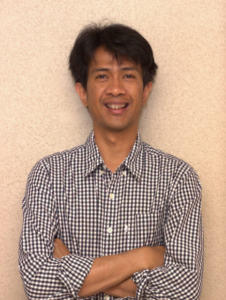The US Department of Energy initiated the Generation IV International Forum to develop the next generation of nuclear technology. The forum, which is composed of advanced nuclear nations, has identified a list of Generation IV nuclear reactors that represent advances in sustainability, economics, safety, reliability, and proliferation-resistance to ensure the future of nuclear energy globally. Dany Mulyana, a Ph.D. student working with Center for Nuclear Security Science and Policy Initiatives (NSSPI) director Dr. Sunil Chirayath, is evaluating the proliferation risk of one of the promising Generation IV reactors, the Pebble Bed reactor (PBR). In his work, he considers the position of countries like his native Indonesia looking to develop nuclear energy, and he hopes to provide a tool that could help policy makers evaluate their nuclear options.

According to Mulyana, “Choosing a proper technology for a nuclear system is a crucial policy determination. Safety, security, nonproliferation, and economical aspects must be accounted to evaluate each’s associated risk contributing to the policy. This could be a hassle for developing countries having less experience in nuclear technology development. The choice between Generation III and Generation IV reactors has been a debate on how they are going to generate nuclear energy for their needs.”
Generation IV reactors are expected to have better proliferation resistance, which means that their technology guards against the possibility of its spent fuel being used to develop a nuclear weapon. Experts consider the PBR to be proliferation resistant due to its unique fuel pebble design, which has a smaller amount of special nuclear material per item of fuel.
However, as Mulyana explains, “Due to the small fuel size, the conventional proliferation resistance evaluation and safeguards approach developed for previous generation of light water reactors (LWRs) cannot be simply implemented.”
Through his research, Mulyana developed a new methodology to evaluate the proliferation resistance of a reactor system accommodating the characteristics of both PBRs and LWRs, which could also be used to evaluate other reactor types. He adapted the proliferation resistance analysis and evaluation tool for observed risk (PRAETOR) code, developed by NSSPI, to be more applicable to the unique fuel of the PBR.

Mulyana’s evaluation found that the LWR system has a higher proliferation resistance compared to the PBR. This implies that the PBR introduces a higher proliferation risk. A single pass refueling–or, moreover, a multi-pass refueling–on the PBR might decrease the material attractiveness by exposing the fuel to different locations in the core with respect to irradiation time. However, online refueling introduces complexities to the safeguards approach needed to deal with the semi-bulk nuclear material in the PBR system. Mulyana proved this through an exhaustive reactor physics modeling and simulation using Monte Carlo method on high fidelity models of the reactors. Mulyana also developed a safeguards approach for the online refueling of the PBR system by implementing a simple gamma spectrometry non-destructive assay on the fuel pebble. The concept was validated using data generated computationally using Monte Carlo simulation.
Prior to joining NSSPI, Mulyana was a nuclear system and risk management engineer in the Indonesian Nuclear Energy Agency for 13 years, working with a broad spectrum of nuclear technology development in Indonesia, from food to energy sectors. His interest is in transforming science and engineering to policy decision making and vice versa. He graduated with a B.S. in Physics from Padjadjaran University of Indonesia in 2003 and with an M.S. in Physics from the University of Indonesia in 2007. He earned a non-degree graduate certificate in Nuclear Security from Texas A&M in 2014 as part of a NSSPI program sponsored by the US Department of State. Mulyana has successfully defended his dissertation and is graduating with his Ph.D. in nuclear engineering in August of 2021. Currently, he is transitioning to a postdoctoral position where he will be working with both NSSPI and the National Center for Electron Beam Research of Texas A&M University.